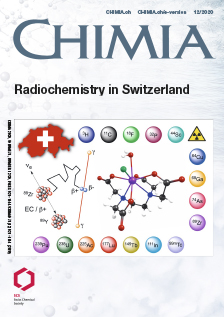Fundamental Research on Radiochemistry of Geological Nuclear Waste Disposal
DOI:
https://doi.org/10.2533/chimia.2020.1000PMID:
33357295Keywords:
Nuclear waste disposal, Radionuclide geochemistry, Radionuclide retention and transportAbstract
Currently, 5 · 1019 Bq of radioactive waste originating from the use of nuclear power for energy production, and medicine, industry and research, is maintained in Switzerland at intermediate storage facilities. Deep geological disposal of nuclear waste is considered as the most reliable and sustainable long-term solution worldwide. Alike the other European countries, the Swiss waste disposal concept embarks on the combination of engineered and geological barriers. The disposal cell is a complex geochemical system. The radionuclide mobility and consequently radiological impact depend not only on their chemical speciation but also on the background concentration of other stable nuclides and their behaviour in the natural environment. The safety assessment of the repository is thus a complex multidisciplinary problem requiring knowledge in chemical thermodynamics, structural chemistry, fluid dynamics, geo- and radiochemistry. Broad aspects of radionuclide thermodynamics and geochemistry are investigated in state-of-the-art radiochemical laboratories at the Paul Scherrer Institute. The research conducted over the last 30 years has resulted in a fundamental understanding of the radionuclides release, retention and transport mechanism in the repository system.Downloads
Published
2020-12-23
Issue
Section
Scientific Articles
License
Copyright (c) 2020 Sergey V. Churakov, Wolfgang Hummel, Maria Marques Fernandes

This work is licensed under a Creative Commons Attribution-NonCommercial 4.0 International License.
How to Cite
[1]
S. V. Churakov, W. Hummel, M. M. Fernandes, Chimia 2020, 74, 1000, DOI: 10.2533/chimia.2020.1000.







